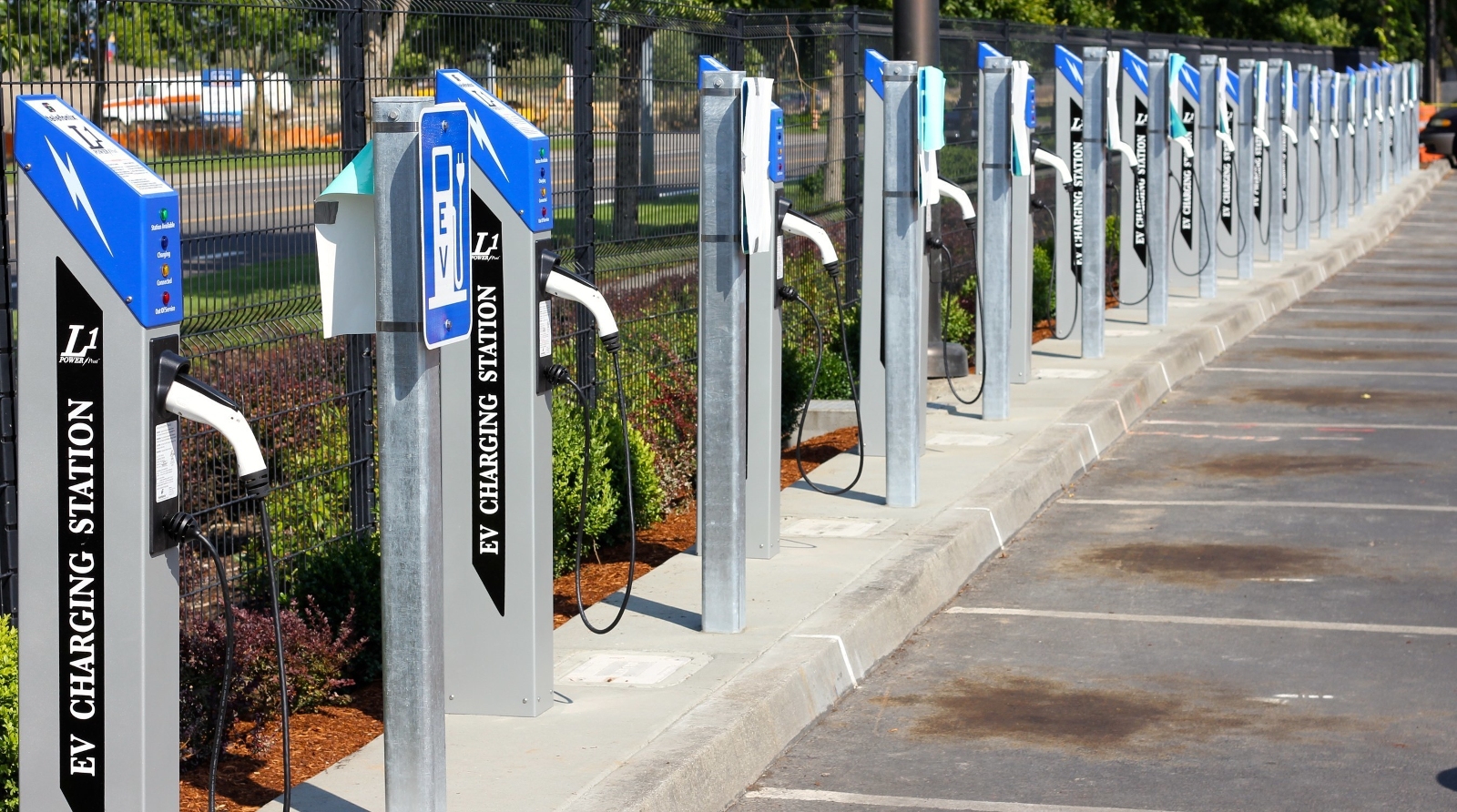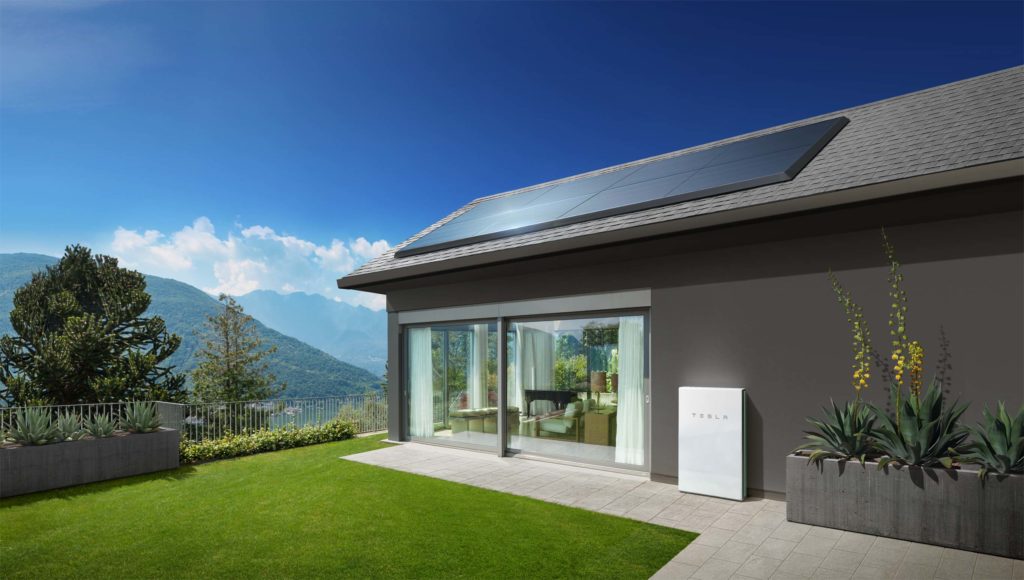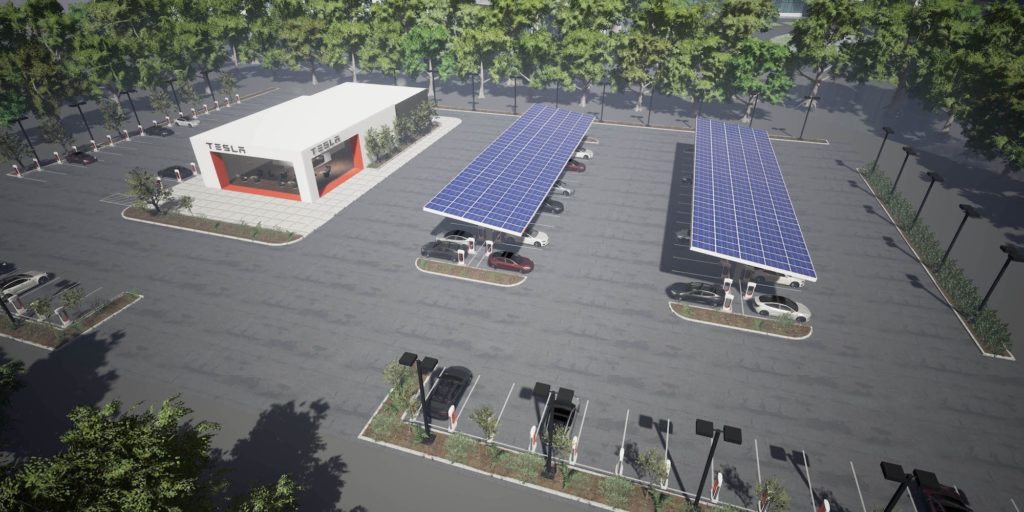
A few days ago, Canadian newspapers published an interesting, but slightly misguided article on the issues of moving gas stations to charging stations. You can read it here.
The summary of this article is that the transition from gas to electricity for inter-city travel is too hard and too expensive. The article missed the fact that the transition is going to take years and that there are other factors at play that make the conversion of a highway service stations a potential money spinner.
Timing: Even if Canada stopped buying fossil/ICE cars today and switched over to 100% battery electric vehicles, it would take 10 years or more to replace the current cars on the road. We buy just under 2 million cars per year and there are about 22 million cars on the road. Many cars now last 15-20 years so the time for total replacement will be much longer. Given current projections my guess is that it will take 20 years or more for the transition to run its course.
Electrical supply changes: In 2016 the US generated about 65% of its electricity from natural gas (33.8%) and coal (30.4%) plus a small amount of oil and other non-renewables, 19.7% came from nuclear and 14.9 percent from renewables, Hydro (6.5%) wind (5.6%), biomass (1.5%), solar (0.9%) geothermal (0.4%).
US solar and wind capacity will continue to grow, even in the current political environment. As renewables grow, the issue becomes matching sunny and windy days to electrical demand. Storing electrical power for use later enables the power grid to make much better use of solar and wind reducing the use of fossil fuel. Tesla’s Powerwall is designed for a single home, but local, regional and grid energy storage systems are being deployed now.

As the installed base of renewables rises, grid storage becomes more and more attractive and important. By storing power in the grid or at the edge of the grid, renewable energy can be captured when excess is available and delivered back to customers when demand exceeds supply. If we are to move to 100% renewables, this will require a lot of power storage. Homes will have power walls and EVs connected to act as storage, neighbourhoods will have local storage and there will be lots of grid storage whether it is battery or other techologies.
How does this impact gas station conversion? Urban areas will not require as much public charging capacity as most EVs will be charged at home or work. Existing models of deploying Level 2 and 3 chargers will be extended, supermarkets, shopping centres, hotels and other destinations with parking will continue to deploy charges because they want to attract customers. Local gas stations will slowly disappear and are unlikely to be replaced directly. As home EV charging has about the same impact as running central air-conditioning, the impact on the grid will be small and will be off-set by home solar and battery systems.
Along highways away from urban centres the story is very different; there is a real need for significant infrastructure to support long distance EV travel. A typical gas station delivers of the order of 200,000km of range per day to the vehicles it services. This is a huge amount of energy and is highly variable. On a holiday Friday evening, some gas stations deliver much more gas than the average day.
The move from gas to electric does not need a one for one replacement of capacity as behaviour and patterns change as we move from fueling to charging. Rather than leaving on a trip in your fossil car with whatever gas you happen to have in the tank, your EV will be fully charged before you leave home. Your car will have a range of 4-500km before you need to charge. This may serve to limit the number of times we need to stop as Ottawa-Toronto would not need a charging stop and Montreal-Toronto would only need one quick stop.
What does a highway service station of 2025 or 2030 look like? The obvious change is that all the parking spots have high power EV chargers. A visit to the service station is just pull up, plug in and go find the coffee and the washroom. With a new generation of EVs charging at 150kW, 200km range added takes only a few minutes and you are on your way. As there is no holding a fuel nozzle in the rain to fuel up, more time is available to relax and take a break from driving.
So this all seems great but how do we get there? The obvious answer is slowly, there is a huge investment required to make this all work but there is a less obvious way this can all work and be economic. The one key technology is local battery storage to smooth demand on the grid. Tesla is already deploying battery storage and solar at their Supercharger locations with the long term goal of disconnecting Superchargers from the grid completely.

The scale required to support a highway service area in a world where most vehicles are EVs brings us back to grid storage. By building large scale energy storage at service stations to allow them to deal with holiday weekends without overloading the local grid service stations have a huge and potentially profitable asset they can use as grid energy storage. Grid storage works by charging when electricity supply exceeds demand when prices are low or even negative and then selling that power back to the grid when prices are high. This technology reduces the need to have lots of backup generating capacity in the grid.
Because we all tend to hit the road on the holidays, there will be a huge difference between the typical usage of the chargers and the peak usage. This means that the energy storage can be used by the grid most of the time, providing a significant revenue opportunity.
This model has the possibility to move service stations to an entirely sustainable future, both economically and environmentally. As service stations are largely rural, colocation of solar and wind farms is also attractive.
For highway service areas, the transition from selling gas to becoming a key part of the electricity supply system will not be easy, but it is achievable and potential profitable.
Visits: 203

Nice blog, nice layout.
Sadly the article does make solid points and is fairly accurate.
In your response there are couple of problems:
“Storing electrical power for use later enables the power grid to make much better use of solar and wind reducing the use of fossil fuel.”
I know an engineer working for electric component supplier for large consumers. From his experience I can tell you that so called “intelligent grid” is going to take a VERY long time to build. The reality is that both resources and energy spent on upgrading grid and storage are miniscule. Moreover vendors charge very high prices resulting in prohibitive costs. Keep in mind that most utilities already have very high debts. Note the political storm here in Ontario regarding paying back debts and high power prices. The end result is that “intelligent grid” and storage are not coming any time soon. I mean not decades but more than century.
“… highway service stations a potential money spinner”
Again I don’t see how can this happen. To the contrary the existing established gas stations infrastructure and distribution model will continue to dominate as long as oil remains in high supply. The high cost of building new electric infrastructure results in very high electricity prices at the new stations causing consumers to choose much cheaper gas. Here is a very simple example from Ottawa using the cheapest possible model. Using city parking lots the new L3 chargers deliver about 40 kW speed at $17/hr. Remember this is the cheapest possible setup using existing city grid and no storage. For a 100 km commute:
Option 1: BEV needs about 20 kWh (on average all seasons) = $8
Option 2: hybrid needs about 6L (assuming $1/L gas) = $6
So already the cheapest L3 charger power is more expensive than gas based on travel distance. Imagine what will happen when you include additional costs for storage that are mandatory on highway service stations. Concordantly there is very little progress on charging stations along 401 and only few ports are built without storage.
“20 years or more for the transition to run its course”
You assume that consumers actually want to switch. Most have confidence in ICE and existing gas stations network while no confidence in EVs. They will not switch until they have confidence in the EV network. Meanwhile EV network is not built since there are not enough cars and consumers don’t want to pay higher costs than what they pay at home from grid. So we are caught in this loop, no EV cars no EV network, deadlock.
“Storing electrical power for use later enables the power grid to make much better use of solar and wind reducing the use of fossil fuel.”
Indeed this is the key. Tesla storage may be great for homes, but it is fat to expensive for larger scale. There are several projects for much cheaper storage not using alternative chemistries, not lithium. Until there is much cheaper storage solution, there will be no progress on “smarter” grid and renewables. Again Powerwall might be step forward, but it will never be cheap enough to store GWs.
“Homes will have power walls and EVs connected to act as storage, neighbourhoods will have local storage and there will be lots of grid storage whether it is battery or other techologies.”
Again this is wishful thinking that doesn’t match reality. Many Ontarians are already angry about MicroFIT program as they think it is resposible for high power costs (it is not, another story). US is phasing out their subsidies for EV cars. The reality is that there is weakening support and less subsidies, not more. Most consumers have so much debt and in case are more interested in pools and other toys, couldn’t care less about solar panels and storage. As long as grid power cost is kept down for good or bad reasons there is simply no interest from individuals to deploy panels and storage.
“… supermarkets, shopping centres, hotels and other destinations with parking will continue to deploy charges because they want to attract customers”
Again wishful thinking. Besides few exceptions (Ikea) most are ignoring EVs. In particular, our biggest chains (Loblaws, Metro, Tim Hortons,…) are completely ignoring EVs and charging. I wish I were wrong but cannot ignore reality.
“… as behaviour and patterns change …”
Sadly not happening. In reality you cannot blame people for not wanting to change since there is no reason to change besides your conscience. It is hard to presuade people to change and think about future generations while costs and marketing are pushing them to not change. It is a loosing battle. It is very clear that consumers don’t want to change and make no plans, don’t care. Simply stop at a gas station any time, no worries. Most people don’t want the hassle of planning trips.
“… new generation of EVs charging at 150kW, 200km range added …”
Again you are ignoring the article and engineering facts. The article didn’t even mention batter heat problems. If you watch Bjorn Nyland BEV evaluations, even the latest cars struggle with heat problems on longer trips. While in theory you could use 150 kW charger to charger a 300 kWh battery, costs would be extreme. Trying to push 150 kW into existing smaller packs would kill them.
In summary,
Yes what you describe will happen. However I differ on time frame. This is not happening in our lifetime.
Ontario and more so Quebec are unusual as they both use very little fossil fuel, in Ontario it is below 6% and Quebec is zero. Viewed through this lens, the need for solar and wind is far less until the nuclear plants reach their end of life. In more fossil fuel dependant areas, grid storage is critical to the transition to solar and wind. Tesla is working with South Australia
By the time we get to 2025 all new EVs will be supporting 350kW charging standards, Tesla is at about 120kW today so this is not a big change. As Tesla is doing today, on-site energy storage is needed to contain demand costs and my thoughts are really just an extension of this plan that Tesla is already executing.
Alternative
Here is what will happen.
Oil will remain affordable for another 10-20 years.
Electric cars will very slowly increase market share and will be limited to travel withing cities. Hybrids will slowly replace pure gas cars and similar to dominate longer trips travel. Pure gas cars will keep majority market share.
10+ years out we will start having more frequent “oil spikes” when price jumps then falls back. This will start to increase interest in EVs and hybrids. At first hybrids will start to gain market share rapidly.
20+ years hybrids take majority of market share and pure ICEs are in decline to be completely gone in 30+ years.
30+ years oil price is much higher causing increasing interest in EVs. At this point finally there is increased interest in smart grid and expanding charging infrastructure. Due to high costs the expansion takes another 3 decades.
In summary, what your describe here will take place but will take a very long time. The main trigger will be oil price. Once oil production goes into permanent decline causing oil price to increase, then we will see much higher interest in alternatives = EVs.
There is a lot of evidence that the average price of oil will stay the same or fall as demand in the west falls, but I don’t think this matters too much. The switch to EVs will pick up when the price of the cars falls below gas cars. EVs are fundamentally easier to build and the only reason internal combustion engines are cheaper is 100 years of experience and economies of scale. As battery plants come on line the price per kWh is dropping very quickly with Panasonic and LG leading the way. The crossing point is perhaps 5 years away if you look at Model 3 becoming profitable and may be 7-10 years for the rest of the market. The natural advantages of EVs just being better cars in everyday use will cause a tipping point.